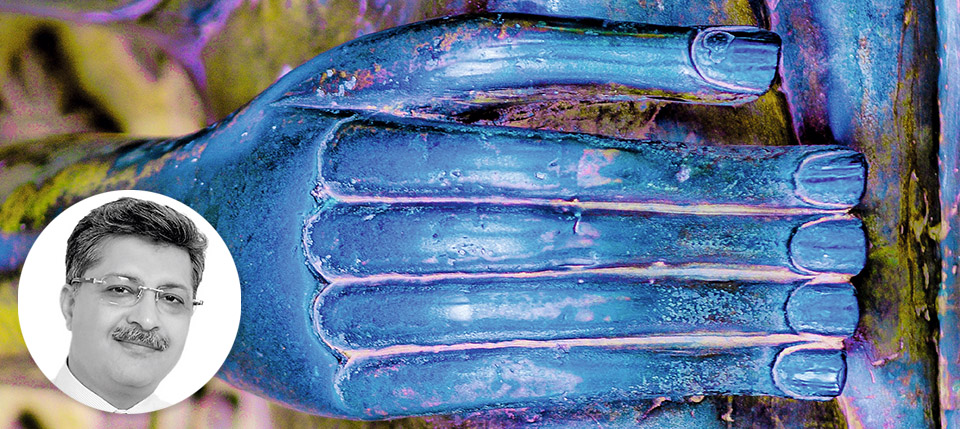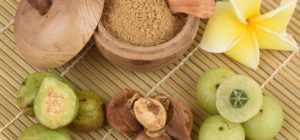Seasonal variations profoundly affect human health thereby predisposing to specific health hazards. Russia being a cold country, spring season, although much awaited by one and all yet brings with it health issues inter-alia impaired digestion and weak bones. Ayurveda interventions in the form of diet, lifestyle and medications for external use as well as internal administration hold great potential in prevention as well as management of health issues.
Vasanta ritu (spring season). This season is considered as season of flowering and origin of new leaves. Predominant Rasa and Mahabhuta during this season are Kashaya (astringent), and Prithvi and Vayu, respectively. Strength of the person remains in medium degree, vitiation of Kapha dosha occurs and Agni remains in Manda state.
During Vasanta ritu, increased Kapha liquified by the heat of sun causes reduced Jathara agni (digestive activity) thereby making one prone to suffer from diseases like cough, cold, allergies, sinusitis, indigestion, etc. It is a known fact that Spring is the time of year for seasonal allergies. As the trees start to bloom and the pollen is released into the atmosphere, the ordeal begins for those who are susceptible to allergy. Perhaps, all living beings are affected with change in season. A study on animals with seasonal changes revealed the effects of photoperiod on immune function and hormone synthesis, which influence the development of opportunistic disease.
In reference to Russia, spring comes slowly. Anton Chekhov once described it as recovery from a serious illness. It is doubtful that you could find any other nation in the world that waits for spring and worships it more than Russians do. Despite the fact that most parts of Russia during springtime are best described in one word ‘slyakot’ meaning ‘slush’ and ‘mud’. Walking becomes an exercise in dodging mud puddles. Rasputitsa – a biannual phenomenon that appears in spring because of melting snow and in the autumn because of rain, is also a term used to describe the situation. The word has no English equivalent, but can best be translated as “when roads stop existing”. Yes, spring in most parts of Russia, is a season defined by bad roads. The living beings also confront multiple problems related with this season, from uncomfortable typical problems to severe problems that may be serious. One of the major problems is deficiency of vitamin-D and consequential effects.

The term “vitamin D” designates two steroid pro-hormones of different origin viz: Ergocalciferol (D2), which is produced from plant sterols provided by the diet, and the Cholecalciferol (D3), which is synthesized in the skin under exposure to ultraviolet radiation. Both pro-hormones are converted into 25-hydroxyvitamin-D (25OH D) in the liver.
Vitamin D deficiency hinders intestinal absorption of calcium and phosphorus and renal re-absorption of these minerals. The change in bone tissue due to vitamin D deficiency clinically manifests itself as rickets in children, and osteomalacia and osteoporosis in adults. Nowadays, high latitude regions are regarded as an endemic risk area for vitamin D deficiency.
Osteoporosis is fast emerging as a public health problem of massive proportions. It is often under-diagnosed and responsible for substantial morbidity and mortality. It is a systemic skeletal disease characterized by low bone mass and micro architectural deterioration of bone tissue, with a consequent increase in bone fragility and susceptibility to fracture. It is also called the ‘brittle bone disease’. The spine, hips and wrists are common areas of bone fractures from osteoporosis. Osteoporosis is most common in women after menopause.
Ayurvedic Management Approaches:
Prevention
- Proper nutrition
- Uses of black gram, sesame seeds, milk, milk products, banana, pear, apple and other dietary articles rich in calcium
- Practice physical exercise like walking, swimming, yogasana and meditation
- Life style modifications like reduction in weight, regular, slow and gentle exercises
- Gentle massage of joints with medicated oils
- Adequate exposure to sunlight
- Avoid consumption of pungent, astringent and salty food as well as suppression of natural urges, intake of excess tea/ coffee/ smoking/ alcohol
Medical management
- Snehana i.e. gentle massage with medicated oils such as Mahanarayana oil, Kshira bala oil, Mahamasha oil, etc.
- Svedana i.e. fomentation in the form of sneha dhara with Dhanvantara oil; upanaha sveda; or sashtika shali pinda sveda.
- Vasti i.e. per-rectal instillation of specific medicated oils, decoctions, honey, etc.
- Administration of single drugs / compound formulations like Ashwagandha (Withania somnifera), Shatavari (Asparagus racemosus), Asthishrinkhala (Cissus quadrangularis), Amalaki (Phyllanthus emblica), Lakshadi guggulu, Pravala pishti, Yogaraja guggulu, etc.
Yoga postures
Apart from Pranayama i.e. breathing exercises, yogic postures like Trikonasana (Triangle pose), Paschimottanasana (Forward bending pose), Pavanamuktsana and Ushtrasana (Camel pose) also aid in improving the digestive fire. Other postures like Vashishthasana (Side Plank Pose), Virabhadrasana (Warrior Pose) and Bhujangasana (Cobra Pose) can also be done to reduce Kapha.
Dr.Pradeep Kumar Dua, Research Officer (Ay.), M.D.(Ay.); P.G.D.H.M.; P.G.D.I.P.R. Law; P.G.D.P.R.A.; P.D.C.R.; P.G.D.B.E., Drug Control Cell, Ministry of AYUSH





